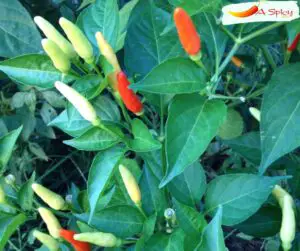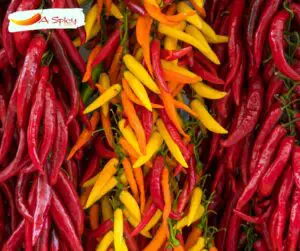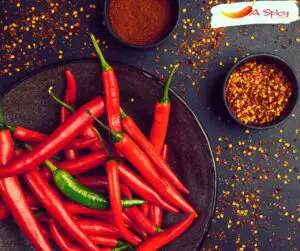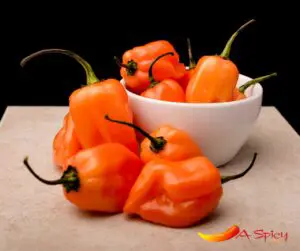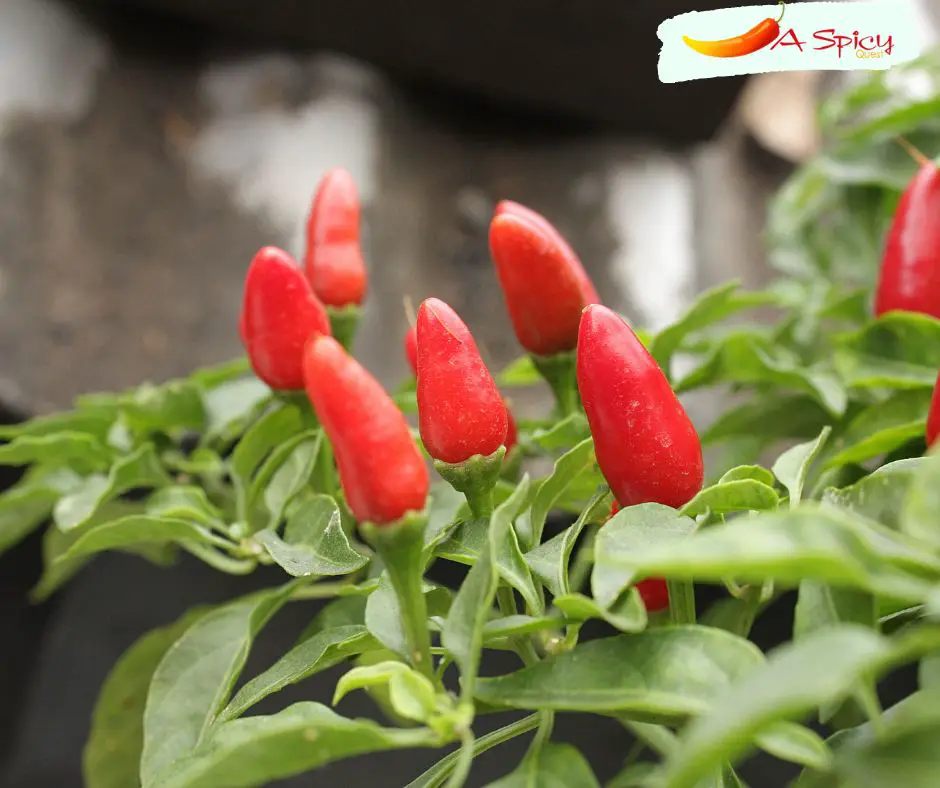
The Capsicum Chinense pepper is the hottest pepper in the world. It’s also known as the red habanero or scotch bonnet. So, how hot is the capsicum chinense hot pepper? The Capsicum Chinense pepper is extremely hot, but it can be used to add flavor to your favorite recipes.
This article will answer all of your questions about this spicy little fruit, including how hot it is, what its health benefits are, and how best to use it.
What is Capsicum Chinense?
Capsicum Chinense is a hot pepper that belongs to the nightshade family. It is also known as “Bird’s-eye Chili Pepper,” and its scientific name is Capsicum annuum. This chili pepper has been used for cooking purposes since ancient times, especially in Southeast Asia.
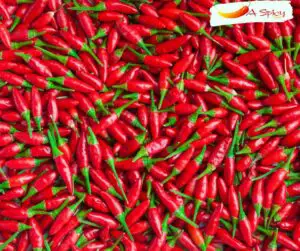
While Capsicum Chinense is not native to this region of the world, it has become incredibly popular there due to its distinctive flavor profile and heat levels—which can range from mild to very spicy if raw or undercooked.
How Hot Are the Different Capsicum Chinense Peppers?
There are many varieties of Capsicum Chinense peppers, and each one has a different amount of heat. The heat level of the pepper depends on a few factors: the variety, where it was grown, how it was grown and when it was harvested. Some varieties have been bred to be hotter than others.
For example, the Naga Jolokia pepper is considered being one of the hottest peppers in existence; however, there are some other types such as Bhut Jolokia that can measure up to 9 million Scoville heat units (SHU) — more than twice as hot!
If you want your own supply of super-spicy food, then consider growing some Capsicum Chinense plants yourself because they can be grown outdoors or indoors while still producing fruit by mid-August if planted during late March or April depending on where you live.
Is the Capsicum Chinense Pepper Good For You?
The Capsicum Chinense pepper is a good source of vitamins A and C, as well as antioxidants. According to The World’s Healthiest Foods, capsaicinoids are anti-inflammatory compounds found in peppers that can help prevent heart disease by lowering bad cholesterol levels and reducing blood pressure.
Additionally, capsaicinoids have been shown to decrease inflammation in the body and may even be useful in treating cancer patients or those with diabetes or metabolic syndrome.
In terms of weight loss, capsaicin has been shown to boost metabolism while suppressing the appetite. This means if you eat something spicy like a hot sauce made with this pepper, then you’re more likely to feel full sooner so your stomach will be smaller (i.e., less food required).
How To Cook With The Capsicum Chinense Pepper
The capsicum chinense pepper is a heat-seeker, so it’s best to use them in dishes that are already hot. You can add them to soups and stews, stir-fries, salads, and sandwiches if you’re looking for that extra kick. They also work well when added to kinds of pasta or casseroles.
The capsicum chinense pepper makes an excellent addition when making hot sauce, as well as pickling brines because of its high acidity levels. If you want some extra spice in your life but don’t want the burn for too long, then try cooking with the capsicum chinense pepper!
Cool Facts About the Capsicum Chinense Pepper
- Capsicum Chinense is the hottest pepper in the world.
- The Bhut Jolokia, also known as “ghost pepper,” was originally discovered in Assam, India, and was quickly adopted by farmers across Southeast Asia. The plant grows well in humid climates and can grow up to three feet tall.
- In addition to being extremely hot, Capsicum Chinense peppers are also known for their long shelf life and high levels of flavor.
Is Capsicum Chinense Pepper Healthy?
- Capsicum Chinense is a very healthy pepper. It has a high amount of vitamins and minerals such as vitamin C, iron, calcium, magnesium, and potassium.
- Capsicum Chinense is also a good source of antioxidants. Antioxidants are molecules that can prevent or reduce the oxidation process in the body. Oxidation is linked to aging and many diseases, so it’s important to have enough antioxidants in your diet every day to keep your health at its best!
- Capsicum Chinense is low in calories because it’s mostly water, which means you don’t have to worry about gaining weight when eating this hot pepper! Plus capsaicin burns fat cells by increasing the metabolic rate, which helps people lose weight faster. So if you want an extra boost for weight loss, then try adding some more hot peppers into your diet today.
Benefits of the Capsicum Chinense Pepper
1. It lowers cholesterol
The Capsicum Chinense pepper has many benefits. For example, it can help lower cholesterol and reduce inflammation. The pepper also contains a lot of vitamin C and magnesium and calcium. These are key nutrients that are important to your health and well-being.
2. It is a good source of vitamin C and carotenoids
The capsicum chinense hot pepper has some great nutritional value. In fact, it is a good source of vitamin C and carotenoids. These nutrients are important for many aspects of health, including immune function, wound healing, and healthy vision. Vitamin C can also help prevent the common cold by forming an essential part of our body’s collagen structure.
3. It is also high in capsaicin, which can help reduce inflammation and pain
Capsaicin is a natural pain reliever—and it’s found in the chili pepper. In fact, capsaicin-containing hot peppers are used to treat rheumatism, joint pain, and muscle spasms. Capsaicin helps combat inflammation by deactivating certain proteins that trigger pain in your body. This makes chili peppers an excellent choice for anyone suffering from arthritis or osteoarthritis.
4. It can help with weight loss
Capsaicin can help burn calories. Capsaicin, the chemical in hot peppers that gives them their heat, has been shown to increase thermogenesis or the amount of energy your body uses when digesting food. This also means that it can help you lose weight by increasing your metabolism and helping you burn more calories throughout the day. It can help control cholesterol levels and prevent heart disease.
5. It can boost the immune system
Capsaicin has been shown to help boost the immune system, which helps fight off infections and bacteria. We also know capsaicin to have anti-inflammatory properties which can be useful for treating conditions like arthritis, for example.
6. It can help with blood sugar regulation
Capsaicin can actually help with blood sugar regulation. The capsaicin in hot peppers is what gives them their heat, but it also helps to stimulate the production of insulin and regulates your blood sugar levels. Studies have shown that consuming spicy foods can lower the risk of developing type 2 diabetes.
In addition to regulating your blood sugar levels, capsaicin may also help you lose weight by burning more calories than normal during exercise.
Conclusion
In conclusion, if you’re looking for a spicy food that will give you some health benefits, the Capsicum Chinense pepper is one of the best options. It’s also easy to grow and can add some spice to your meal or side dish.

